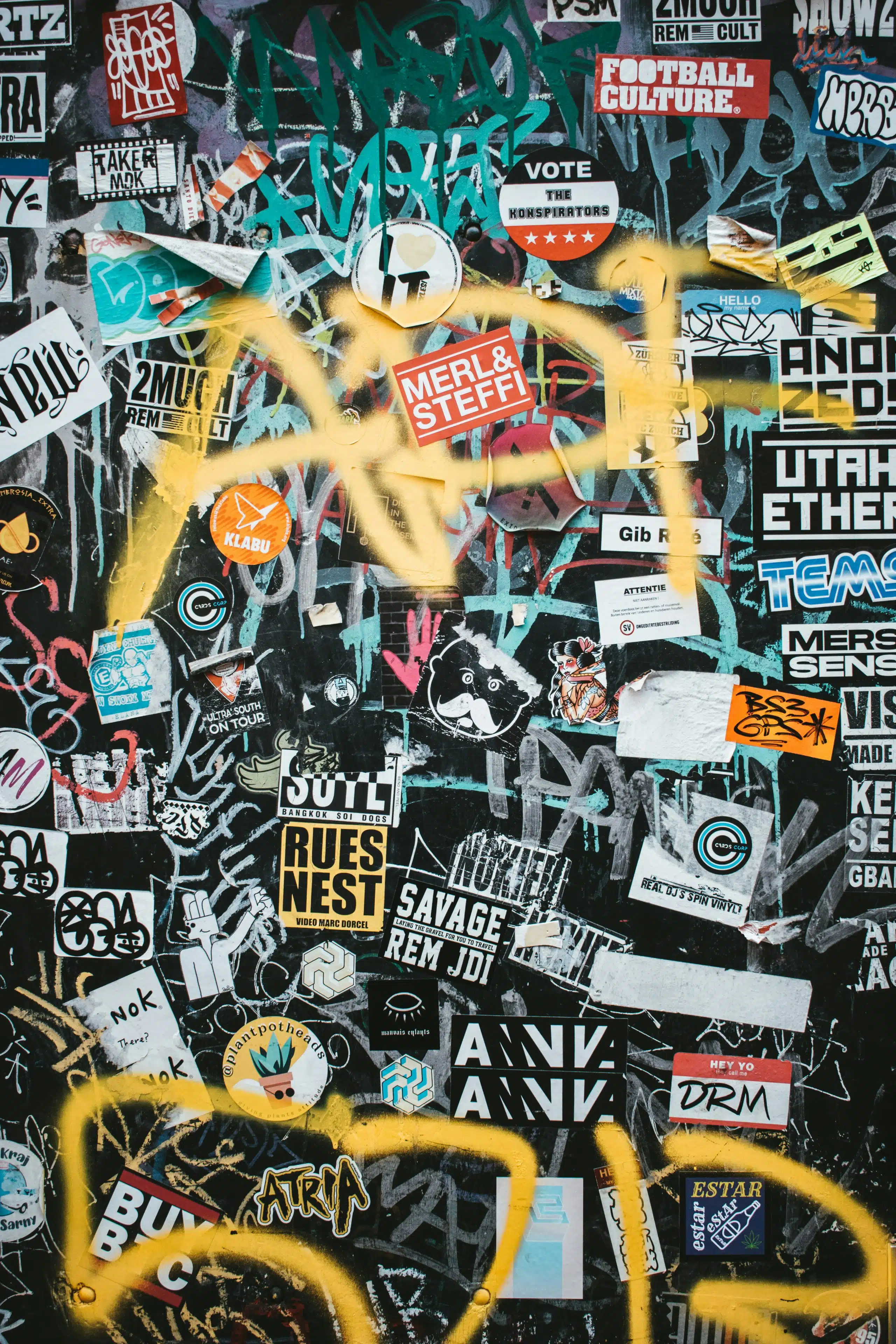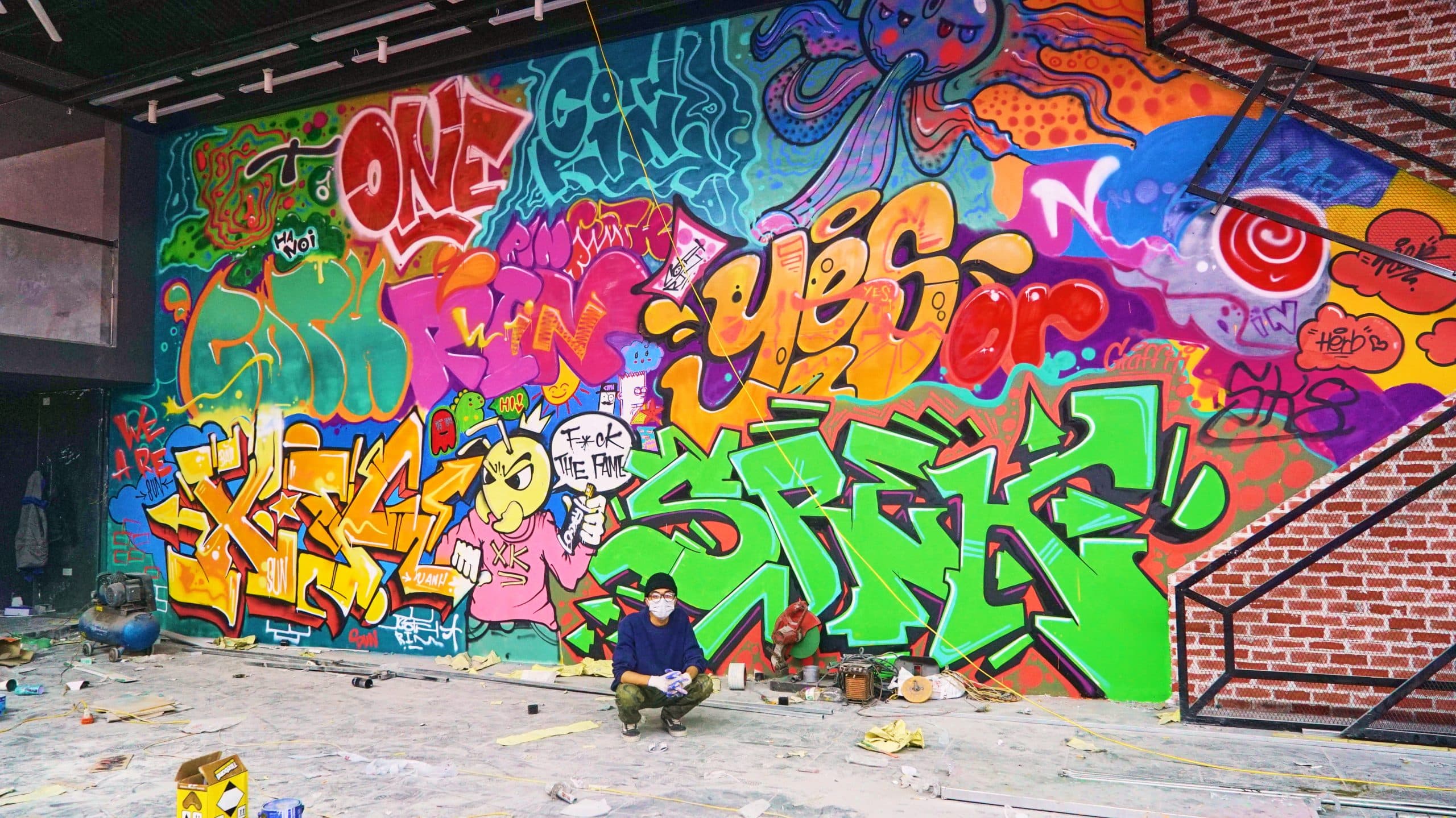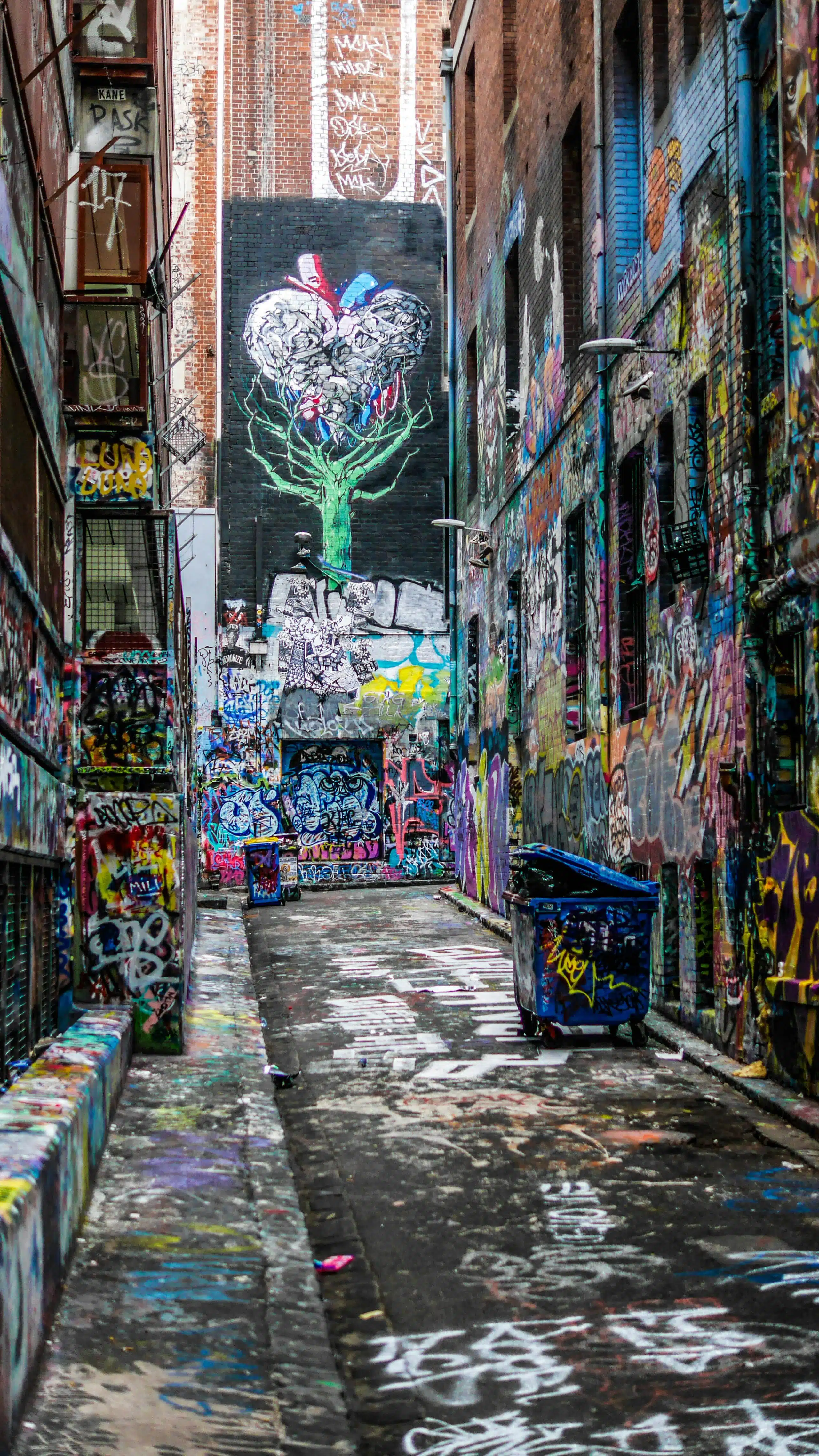Story LIEUCHUONG
Photos INTERNET
Once considered mere vandalism, street art has transformed global culture.

Spray paint and concrete walls
Art has always been one of the most authentic reflections of contemporary society. By examining artistic movements throughout history, we can gain insight into the ideals and struggles of creative generations. And when some artists dared to step out onto streets and alleys, sketching with raw materials that would never be accepted in traditional galleries, a bold new revolution emerged.
“Street art” is a familiar term, a widely popular artistic movement in today’s world. In any country, it’s not difficult to find streets adorned with graffiti murals or public spaces filled with skateboarders and Hip Hop dancers. In fact, from Hong Kong to major cities in the US, France and England, these streets have become famous cultural tourist destinations. Visitors can admire firsthand the works that made the names of talented artists like Banksy, Invader, Keith Haring, Shepard Fairey and Blek le Rat. It is a wonderful experience for any art lover in 2024, but if we rewind 60 or 70 years, it would be a completely different story.
First appearing in Philadelphia, then moving to New York City in the 1960s, street art was almost inseparable from the daily lives of people of color who suffered countless disadvantages due to racial discrimination. Amid these poor living conditions, street art seemed to be the only outlet for creative souls who wanted to raise their voices honestly in the face of adversity. These pioneers quietly expressed all the wild ideas and images in their heads using readily available materials: spray paint instead of paintbrushes, and concrete walls instead of canvas or paper. Thus, from simple name tags to large-scale and colorful pieces, the unique imprint of street art increasingly appeared on streets large and small, even for a time covering almost all of New York City’s subway cars.

Predictably, the explosive emergence of such an edgy creative community faced heavy prejudice from society and relentless efforts to suppress it by authorities. In the eyes of the American public at the time, street art was no different from vandalism, a disruption of public order. For years, the street art that emerged from marginalized communities was treated as a form of lawlessness and rebellious movement; opposition was so intense that the US government enacted the Anti-Graffiti Act in 1972, which officially classified the main form of street art as a criminal act.
Becoming iconic
However, the fierce opposition did not deter the artists labeled as “vandals.” If anything, it gave them more motivation to continue reflecting pressing social issues through a unique worldview. Highlighted by 1980s art stars such as Jean-Michel Basquiat and Keith Haring, they raised their voices around the US-Soviet nuclear arms race, racial discrimination and the drug epidemic of crack that was devastating inner cities at the time. It was also these gritty artists who spread powerful messages about safe sex, LGBTQ support and AIDS prevention.
From its initial bad reputation, street art suddenly infused society with an enormously positive influence, spreading to Europe and elsewhere. It became the precursor for the emergence of Banksy, one of the world’s greatest street artists, with his famous series of works depicting the Israeli-Palestinian conflict.

Now, after decades of tenacious struggle, street art has become an indispensable part of global popular culture, including in Vietnam. Its leading practitioners are not only widely recognized but have also become iconic stars for many subsequent generations. More than any other movement, street art contains an abundance of vitality and a strong spirit of overcoming prejudices. It embodies the fierce yet humane struggle for equality of people of color while also marking marks a pivotal turning point in almost all of society’s rigid notions about the word “art.”
Following the development of street art, a more open mindset about creativity has continued to flourish, paving the way for the growth of many other art forms from pop art to muralism to digital art. Raw yet striking, edgy yet free-spirited, street art has left a major cultural imprint on the modern creative world and made an invaluable contribution on the journey towards a more humane, civilized and equitable society.










